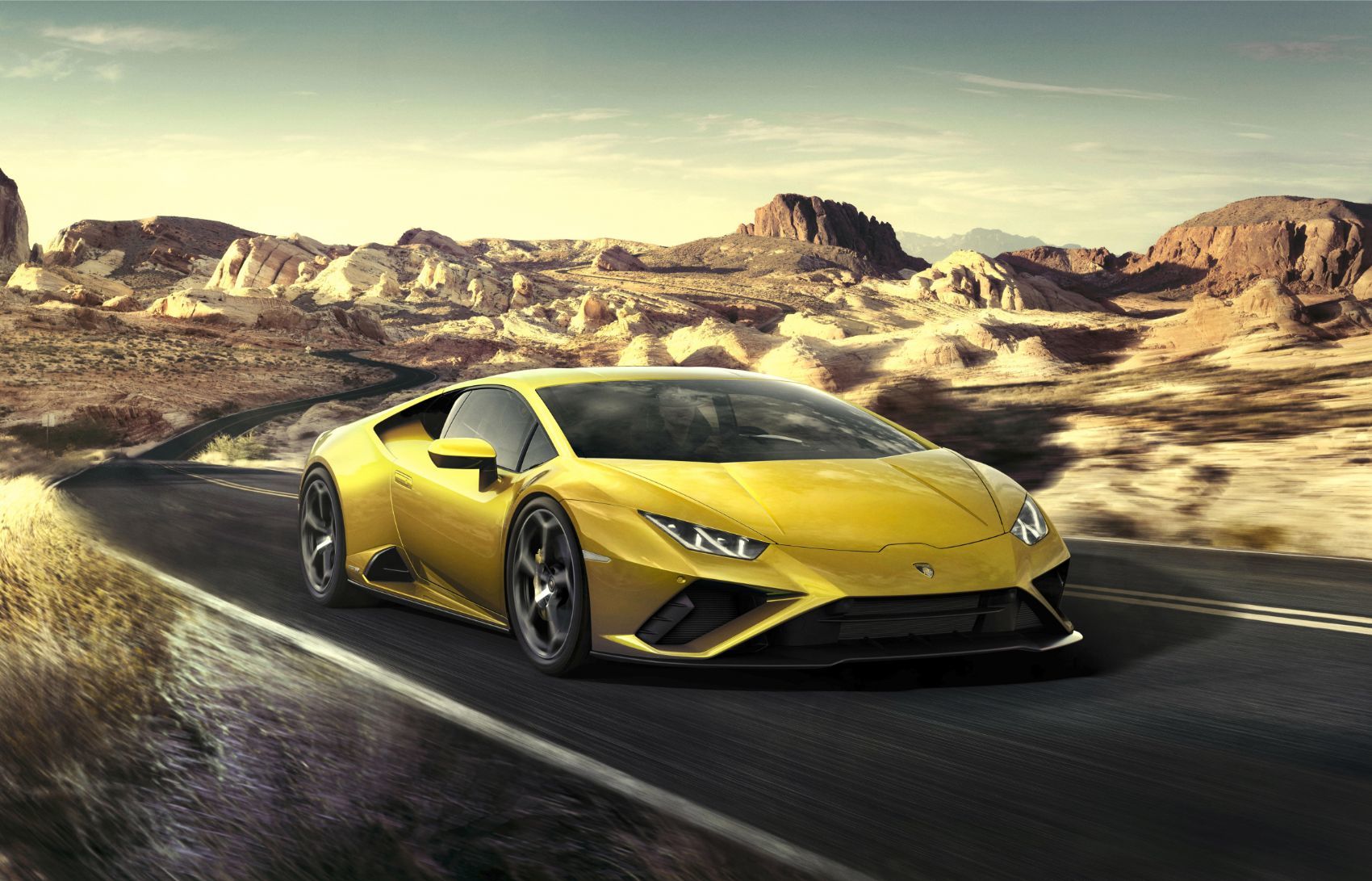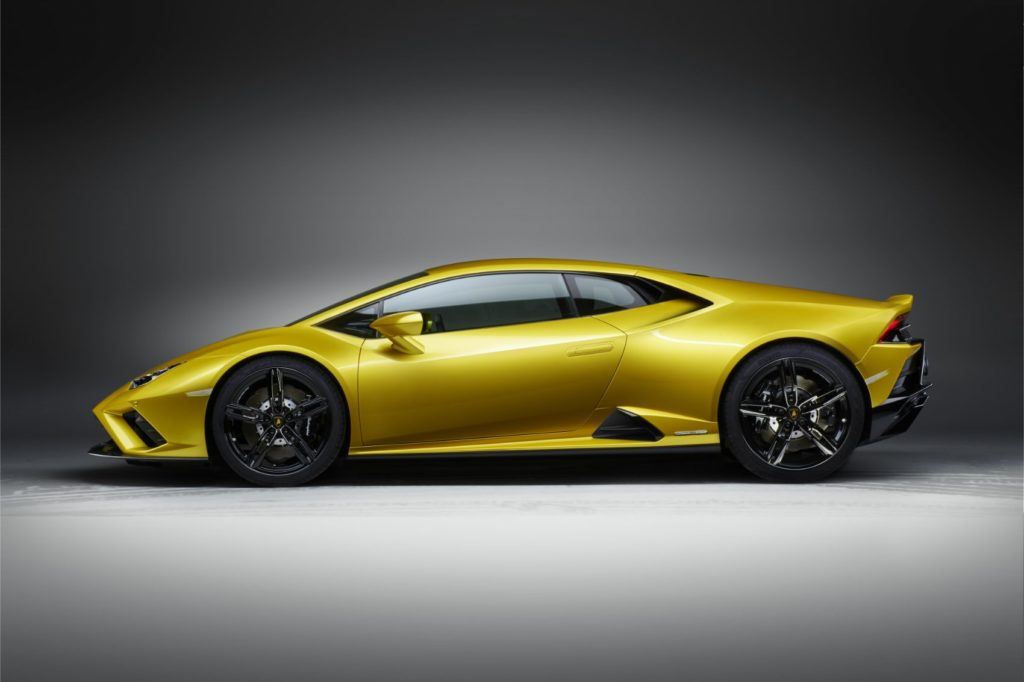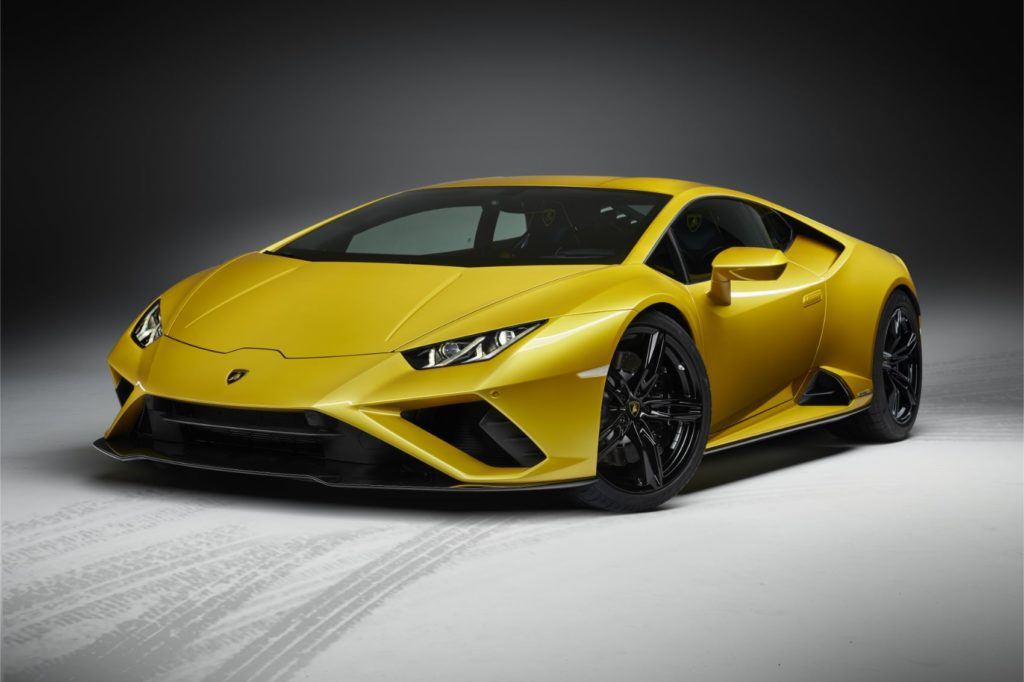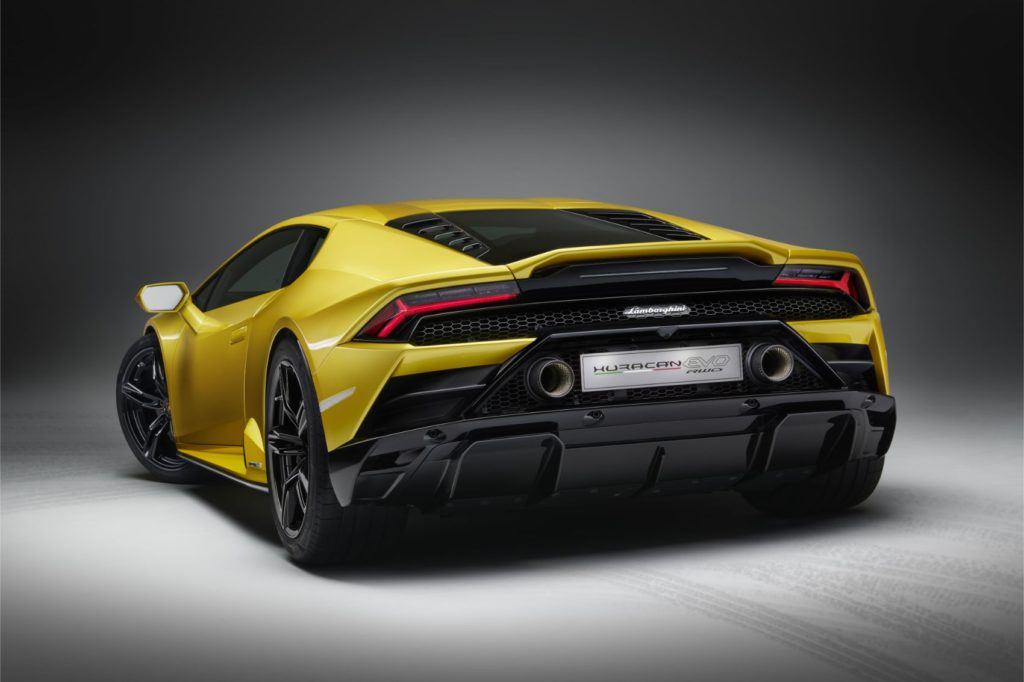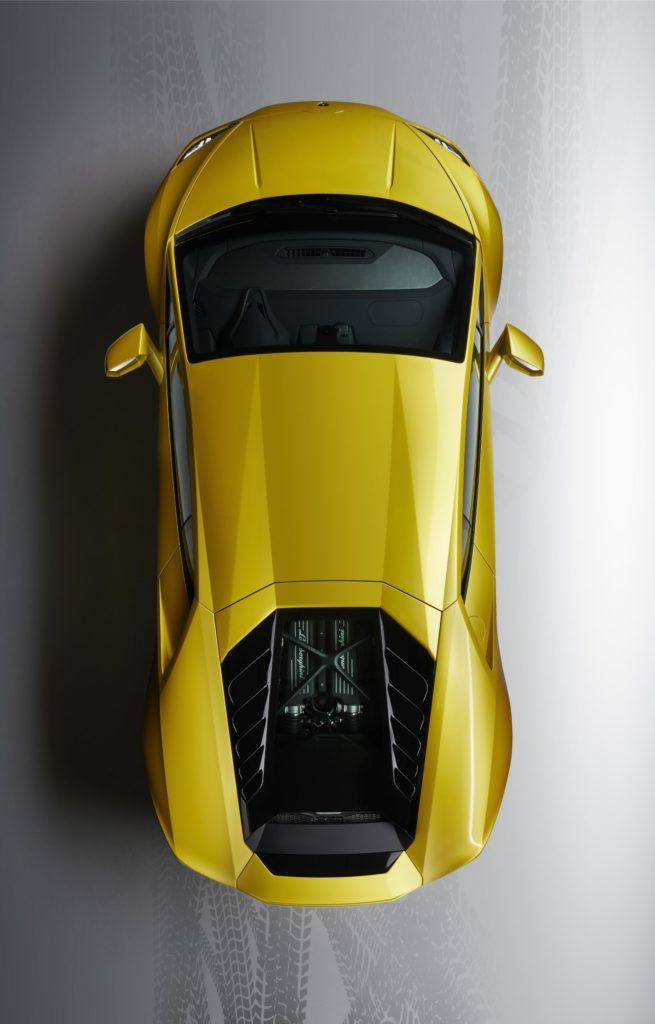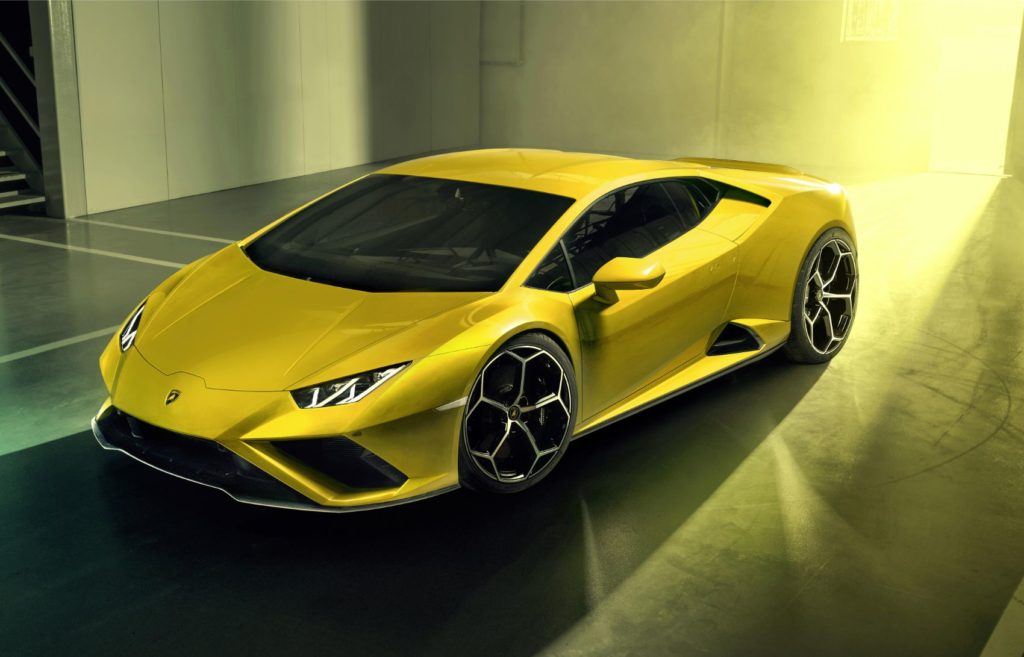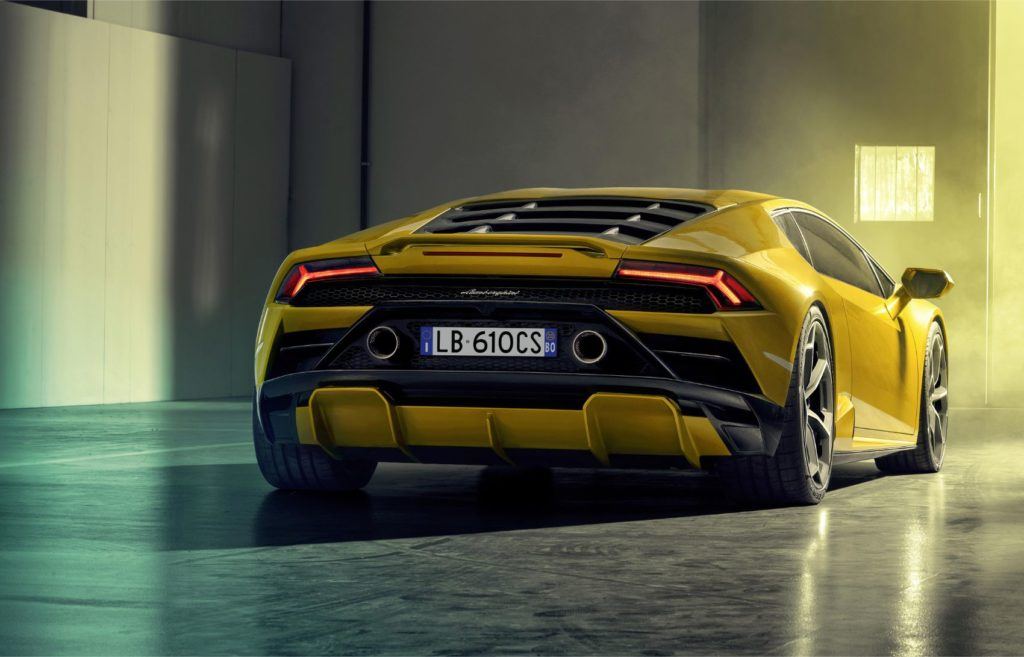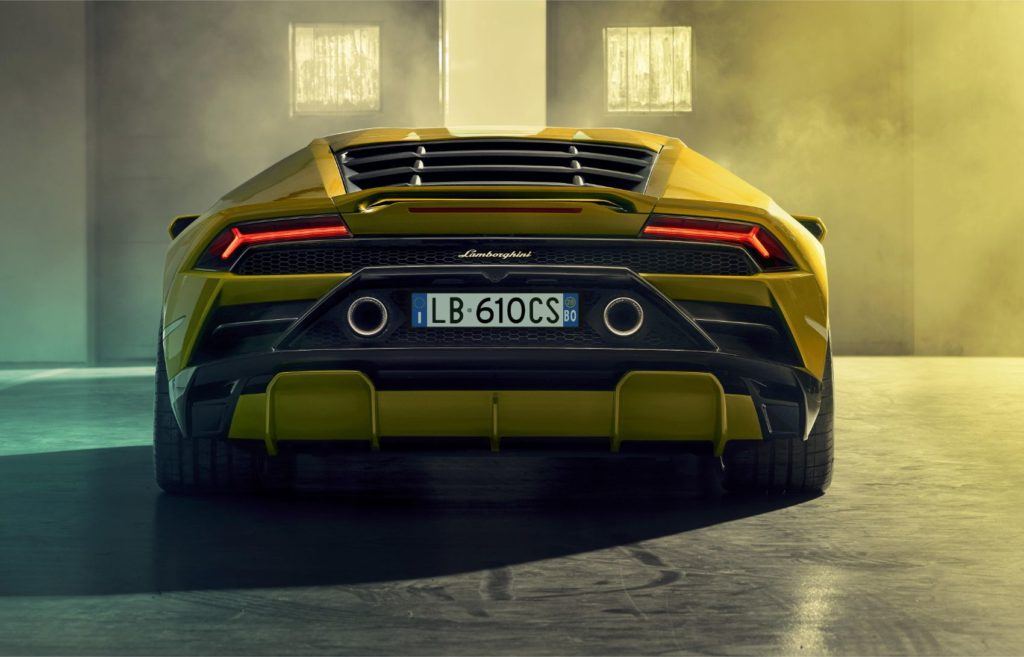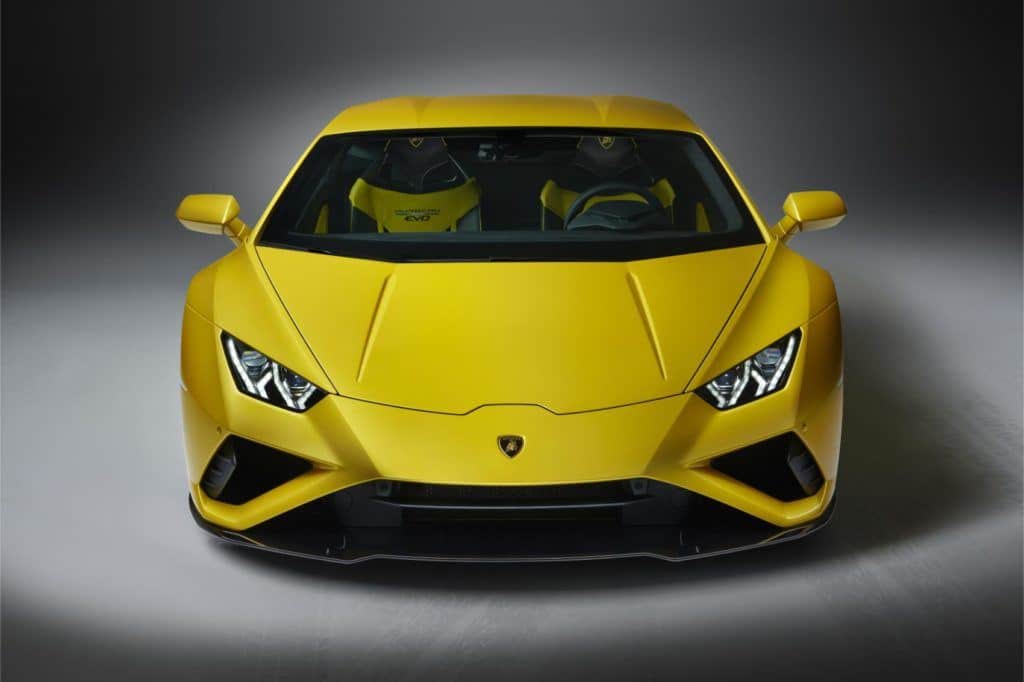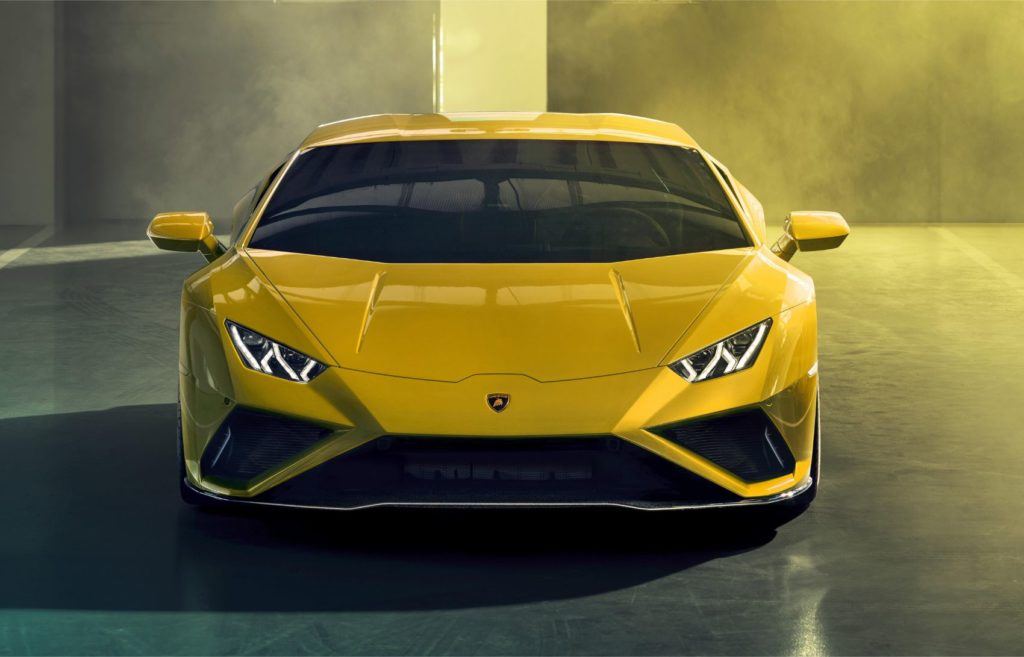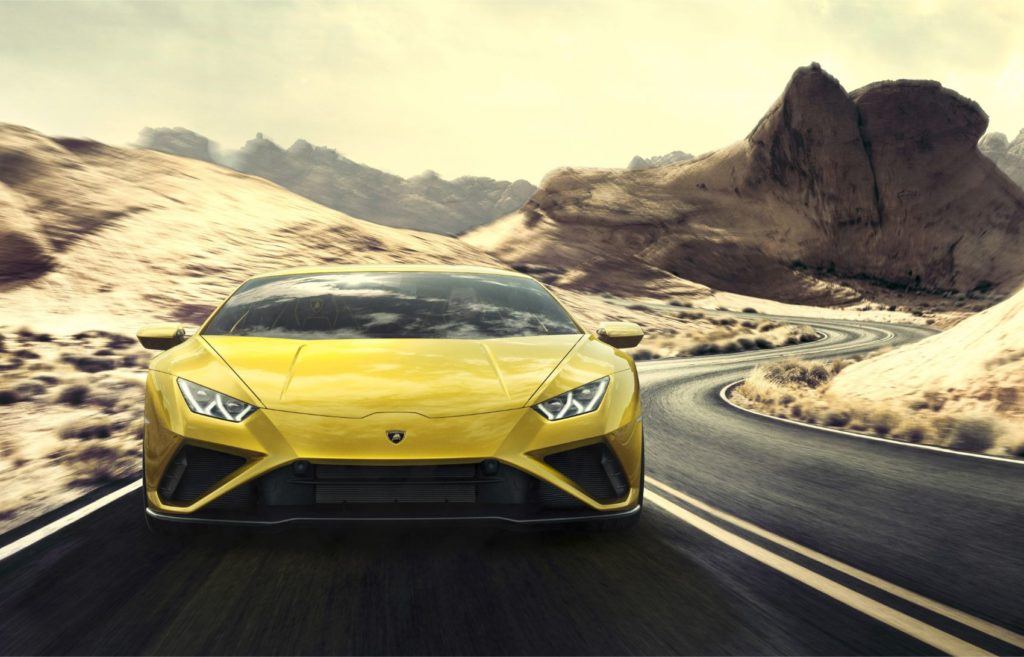- The Lamborghini Huracán EVO RWD features a naturally-aspirated V10.
- Special traction control and steering technologies help balance the vehicle.
- Lamborghini’s Ad Personam program is available for the Huracán EVO RWD.
More is less, or so said the architect Mies van der Rohe. Although I have my differences with Herr Mies van der Rohe, in a lot of ways, that’s a hard axiom to argue with. Take cars for example. Although I’m usually just fine with adding tech to cars, some times, adding more isn’t the right move. In fact, taking things away makes for a much better experience, especially if you love to drive. Cars like the Porsche 911 R, Dodge Challenger SRT Demon, and literally every Lotus ever made subscribe to the less stuff is better theory.
Another good example of this is Lamborghini’s new Huracán EVO RWD.
All-wheel drive cures a multitude of ills. It works better in adverse weather conditions, gives you more grip off the line, and can correct handling imbalances. Then again, you know what else corrects handling imbalances? Just making the car right in the first place. Lambo seems to have done just that, because the Huracán EVO RWD seems like quite the car, even if it is, technically, less.
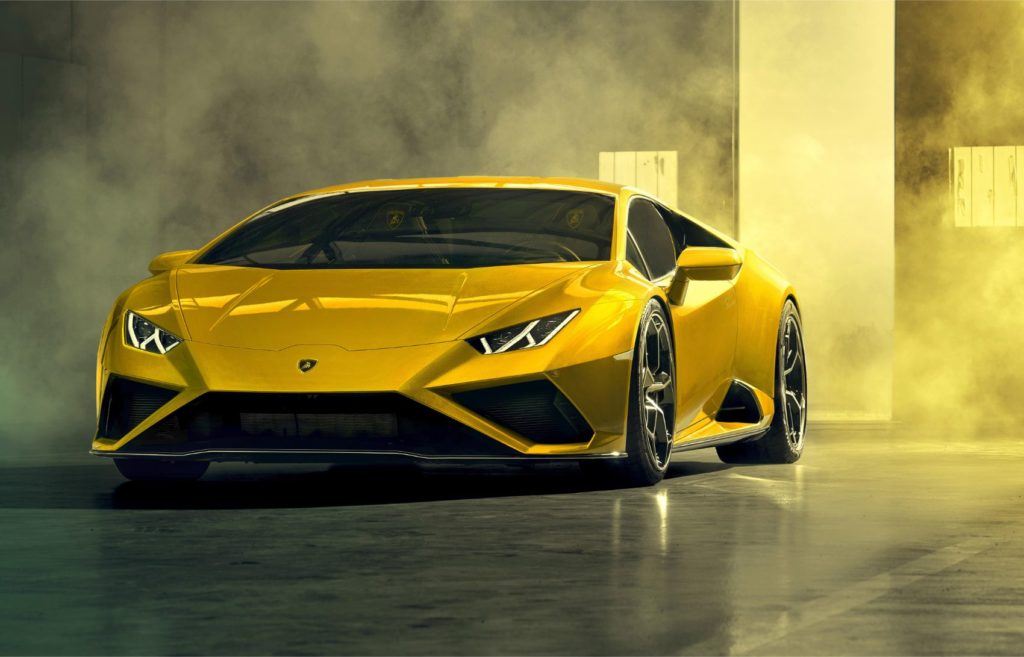
Lamborghini Huracán EVO RWD: Vital Specs
The new Huracán EVO RWD is powered by the same naturally-aspirated, 90 degree V10 found in its more common all-wheel drive stablemate. Lambo’s engine employs a long-stroke architecture, and combines multi-point injection with IDS (Iniezione Diretta Stratificata) stratified injection. Yes, that’s the same V10 found in its corporate cousin, the Audi R8. The same could be said about the all-wheel drive system, but that’s what Sant’Agata Bolognese decided to drop.
There’s also a new Performance Traction Control System (P-TCS) calibrated specifically for the rear-wheel drive layout. Probably a smart move, given how the big 10 puts out a healthy 610 horsepower and 413 lb-ft. of torque. The engine is attached to a seven-speed, Doppia Frizione dual-clutch transmission.
Given the rear bias of the mid-engine layout, combined with that much power, it would be a diabolical handful in the wet. As it sits, the Huracán EVO RWD tips the scales at just 3,062 lbs. thanks to its carbon fiber and aluminum chassis. Given what the V10 cranks out, along with this lighter chassis, the Huracán EVO RWD can run from zero to 62 mph in just 3.3 seconds, topping out at 202. Nice!
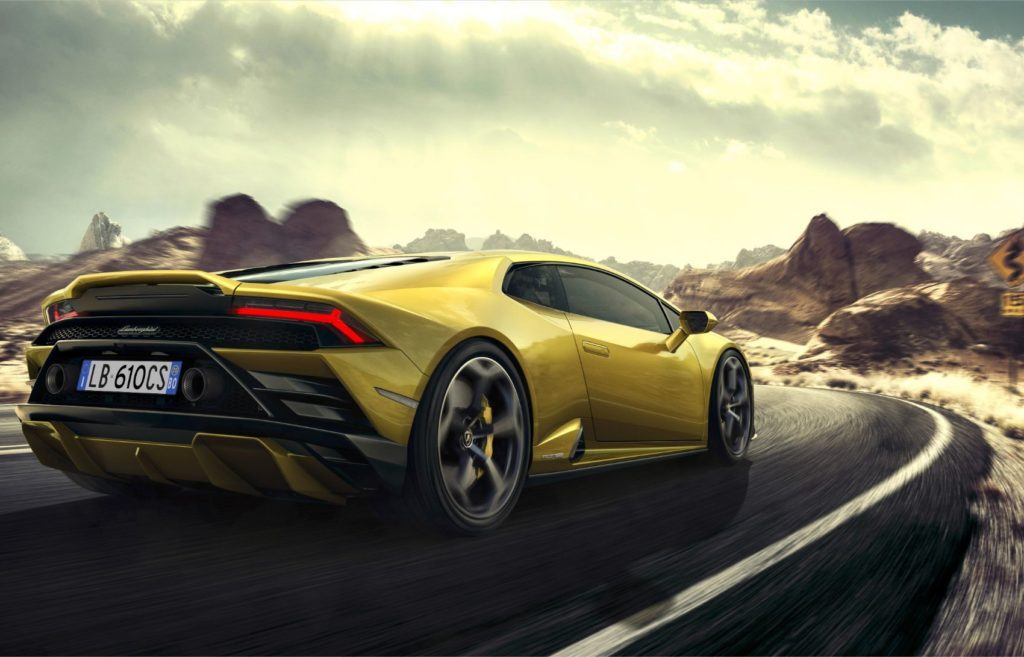
Keeping Things Balanced
That P-TCS system delivers torque in advance. Lamborghini describes the system as one that avoids a “harsh torque cut” to assure better traction when exiting a corner. Lambo says “normal traction control systems” have a tendency to sharply decouple the drive – which is usually followed by the vehicle needing to be stable again before torque can be delivered. With P-TCS that necessary torque is delivered ahead of time for better traction as the Huracán EVO RWD rolls through corners.
Additionally, the electro-mechanical, servo-assisted Lamborghini Dynamic Steering (LDS) is tuned specifically for the Huracán EVO RWD. The system automatically varies the steering ratio for the best response based on the type of driving you are doing.
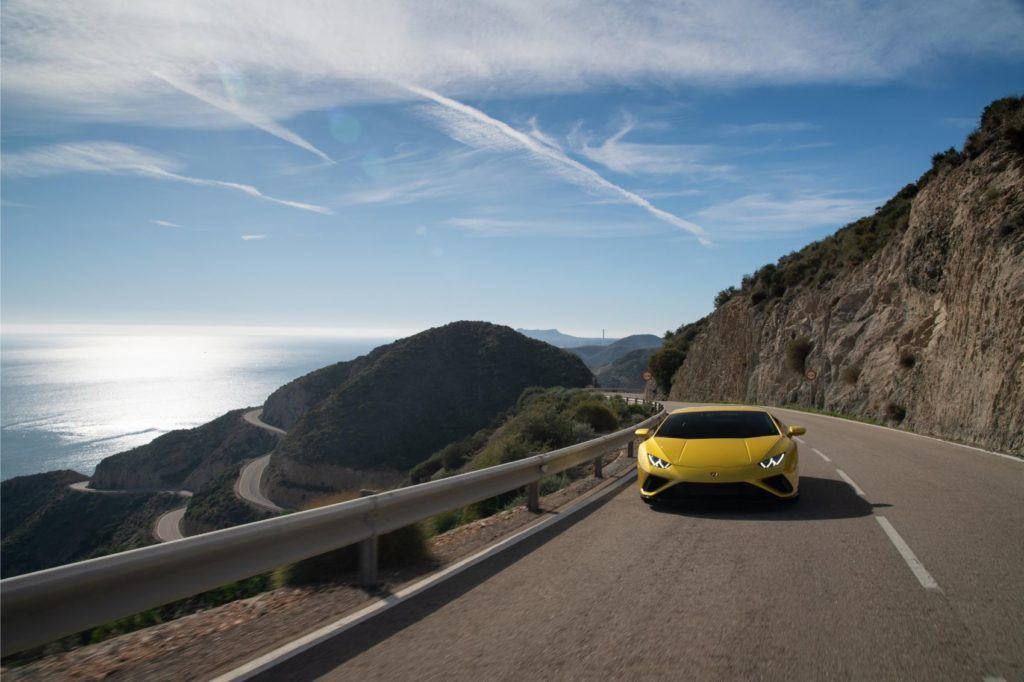
Soul of The Drive!
P-TCS is calibrated to the Huracán EVO RWD’s driving modes, selected via the steering wheel ANIMA button. Yes, that’s basically Lambo’s version of Ferrari’s Manatino setup, oh, and in case you didn’t get the play on words, anima means ‘soul’ in Italian, but in this case it means Adaptive Network Intelligent Management. The ANIMA modes break down like this:
STRADA: Rear-wheel slippage is minimized for stability (and safety) in all conditions, and better manages torque delivery on surfaces with less than ideal traction.
SPORT: Aims to give you maximum fun via the rear wheels being able to slide and slither during acceleration. Easy drifting without compromising safety. Huzzah!
CORSA: Balances rear-wheel slip for the best traction and agility when exiting a corner, thus maximizing overall performance. Lamborghini says this new version of CORSA improves smoothness by 30 percent and corner-exit traction by 20 percent.
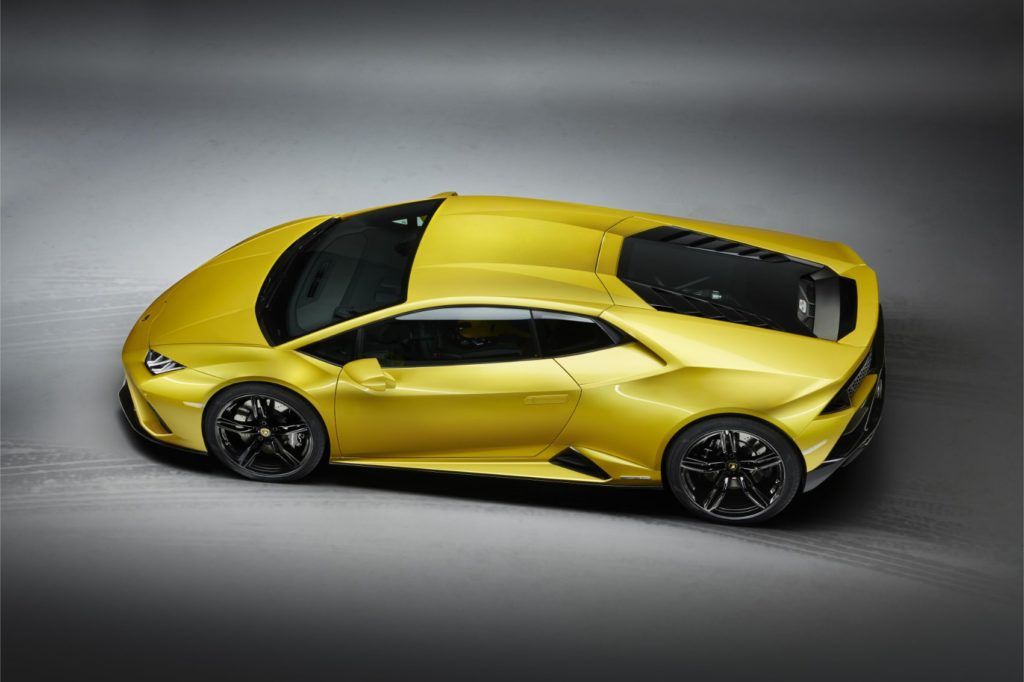
Huracán EVO RWD: Styling & Design
The Huracán EVO RWD gets a new front splitter and vertical fins within larger, framed front air intakes. The rear bumper in high gloss black incorporates a new diffuser unique to the Huracán EVO RWD.
On the inside, you’ll find an HMI 8.4-inch touchscreen in the center console with Apple CarPlay. This touchscreen controls all the car’s functions as well as managing telephone calls, internet access, and other connectivity features. Lamborghini also came up with a new color, Giallo Belenus (yellow), along with a leather and Alcantara theme for the interior trim, which matches the new exterior color.
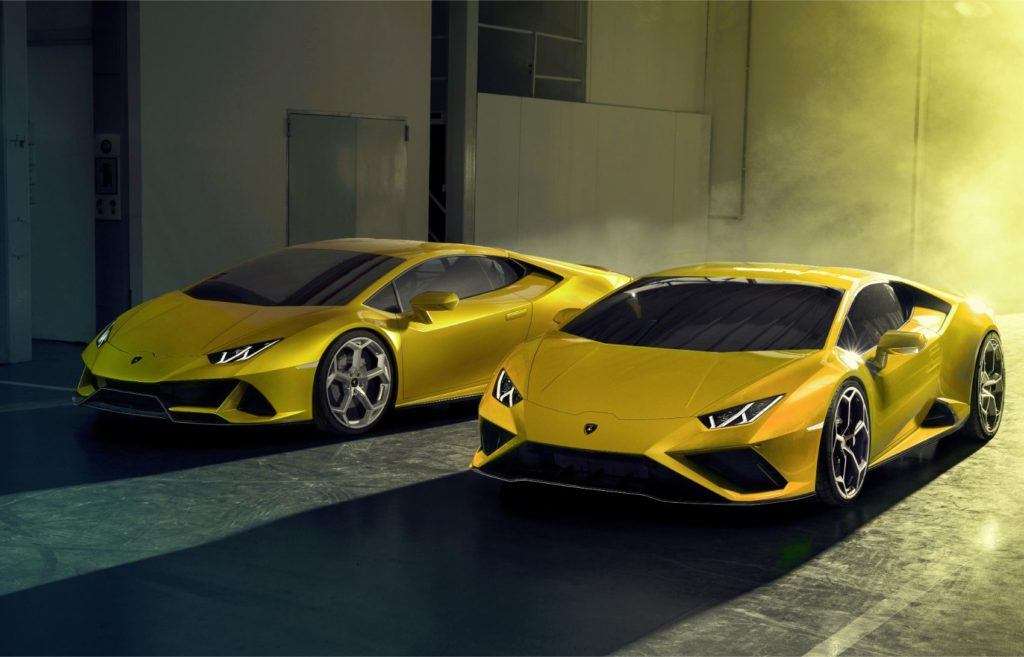
Huracán EVO RWD: Pricing & Availability
Yes, it’ll cost a lot, but, when the Lamborghini Huracán EVO RWD arrives this spring, it will probably be worth every cent of its $208,571 price tag. If you want more, the Ad Personam program provides dozens of options for color and trim so you can create your Huracán EVO RWD to your own style and liking.
Tony Borroz has spent his entire life racing antique and sports cars. He is the author of Bricks & Bones: The Endearing Legacy and Nitty-Gritty Phenomenon of The Indy 500, available in paperback or Kindle format. Follow his work on Twitter: @TonyBorroz.
Lamborghini Huracán EVO RWD Gallery
Photos & Source: Automobili Lamborghini.

